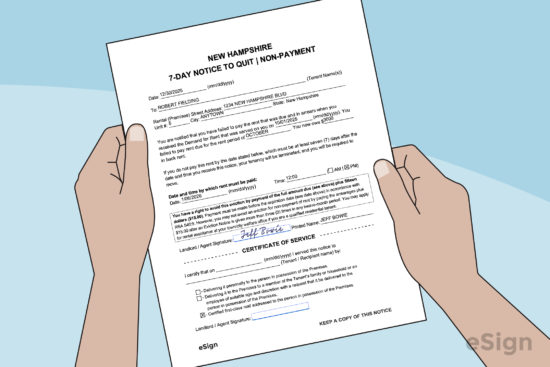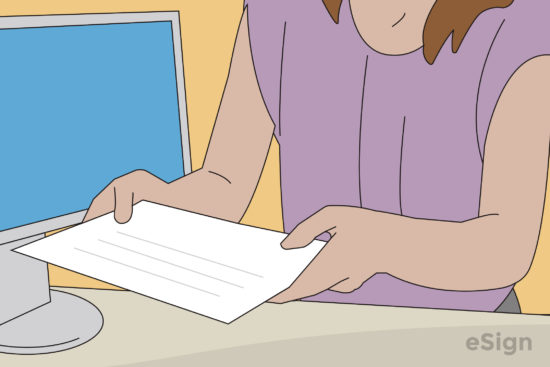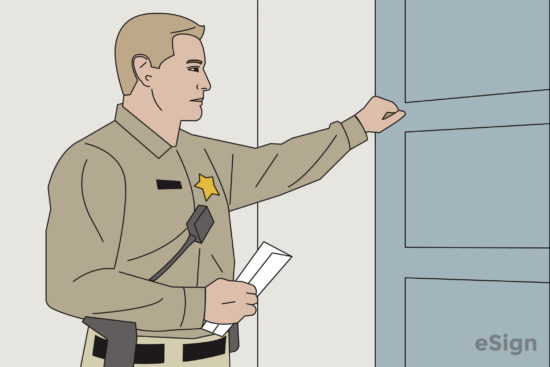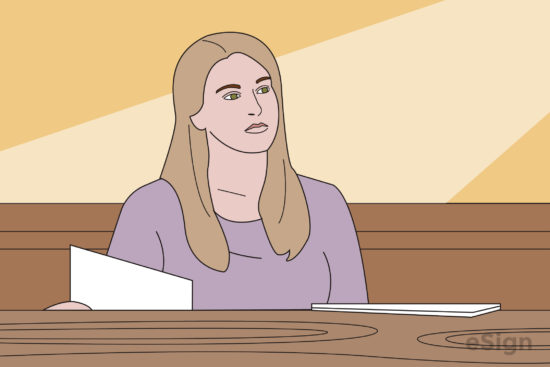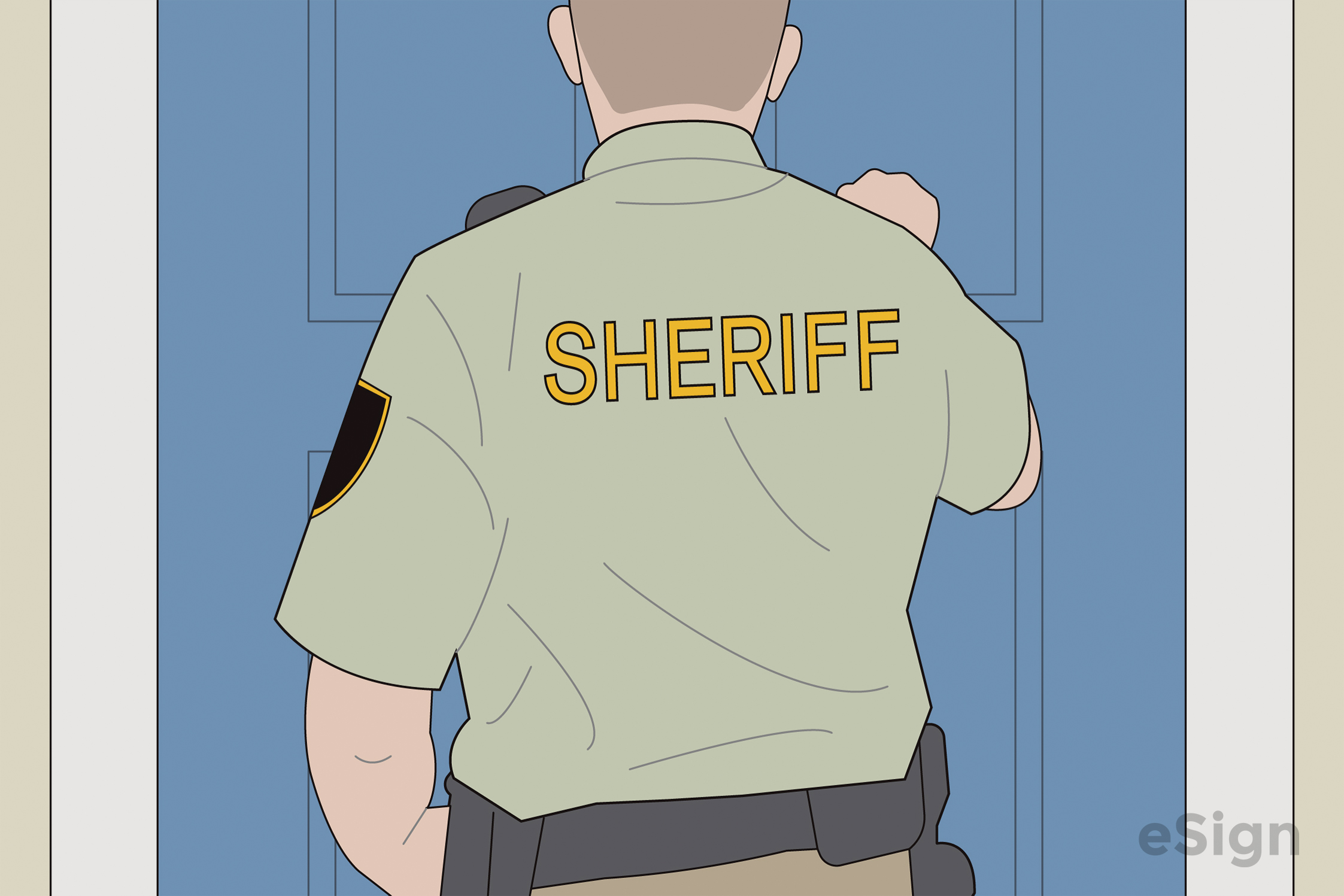Eviction Notices: By Type (5)
 Eviction Notice – This official eviction notice can be prepared to address most eviction cases. Eviction Notice – This official eviction notice can be prepared to address most eviction cases.
Download: PDF |
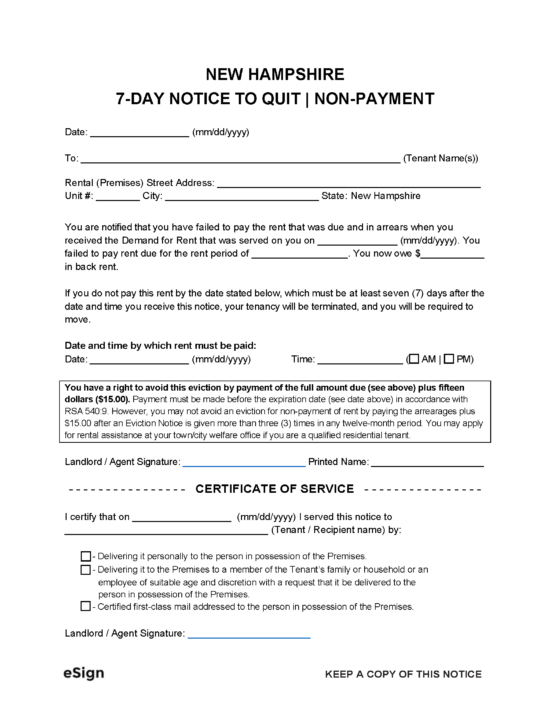 7-Day Notice to Quit | Non-Payment – Provides a tenant with seven days to deliver owed rent; if they do not pay within this period, their lease will terminate. 7-Day Notice to Quit | Non-Payment – Provides a tenant with seven days to deliver owed rent; if they do not pay within this period, their lease will terminate.
Download: PDF, Word (.docx), OpenDocument |
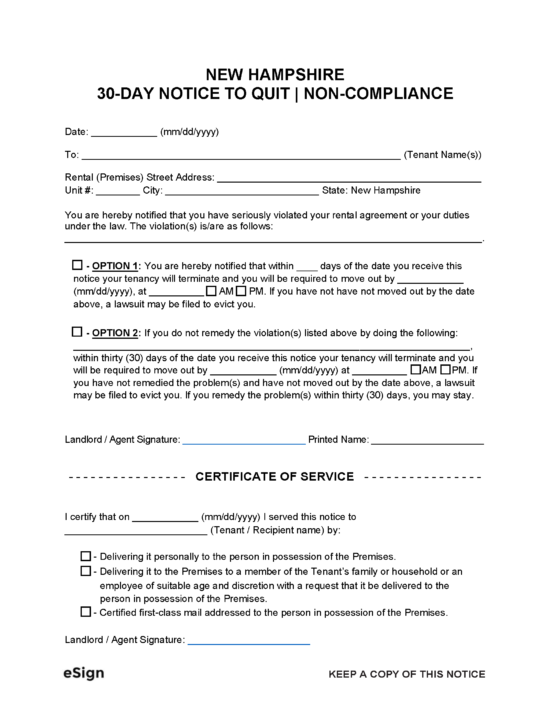 30-Day Notice to Quit | Non-Compliance – Outlines a tenant’s lease violations and the deadline by which they must move out (or remedy the violation, if applicable). 30-Day Notice to Quit | Non-Compliance – Outlines a tenant’s lease violations and the deadline by which they must move out (or remedy the violation, if applicable).
Download: PDF, Word (.docx), OpenDocument |
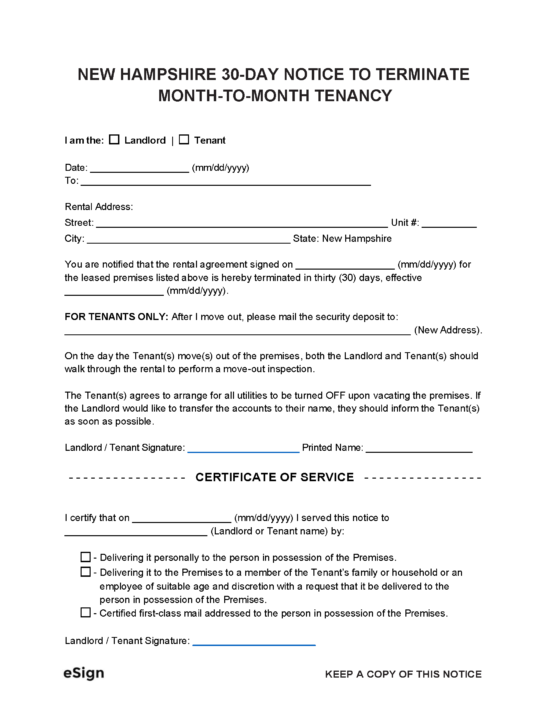 30-Day Notice to Terminate | Month-to-Month Lease – This document must be delivered to a landlord or tenant to end a month-to-month tenancy. 30-Day Notice to Terminate | Month-to-Month Lease – This document must be delivered to a landlord or tenant to end a month-to-month tenancy.
Download: PDF, Word (.docx), OpenDocument |
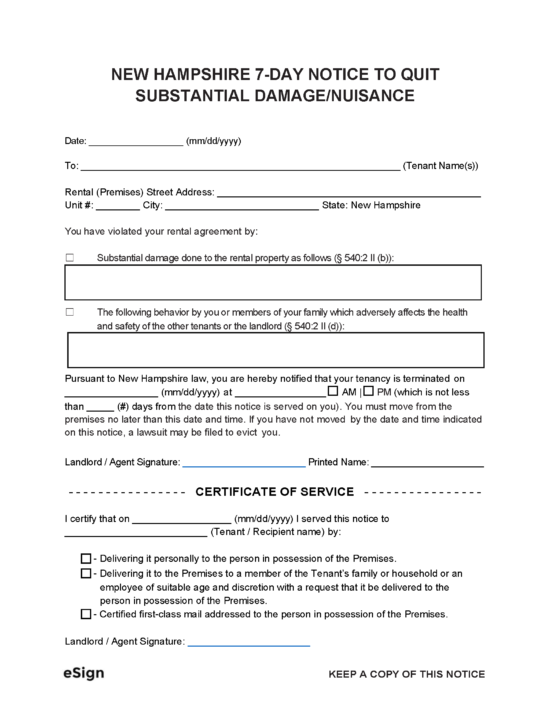 7-Day Notice to Quit | Substantial Damage/Nuisance – Used to evict a tenant who has severely damaged the unit or threatened the health or safety of others. 7-Day Notice to Quit | Substantial Damage/Nuisance – Used to evict a tenant who has severely damaged the unit or threatened the health or safety of others.
Download: PDF, Word (.docx), OpenDocument |
Notice Requirements
How to Evict a Tenant in New Hampshire
Step 1 – Serve Notice
The first step in evicting a tenant is serving an eviction notice on the tenant. The form can be handed directly to the tenant or posted on the entrance of the tenant’s unit.
If the reason for the notice is non-payment of rent, the landlord must also give the tenant a Demand for Rent.
Step 2 – File for Eviction
If the deadline to vacate passes and the tenant has not moved out (or paid rent), the landlord can obtain a Landlord and Tenant Writ by filing the below forms with the District Court that has jurisdiction over the property.
- Affidavit of Compliance with Federal Law
- Affidavit as to Military Service
- Affidavit of Damages and Statement of Claim (if evicting due to non-payment)
- A copy of the expired notice to quit and Demand for Rent
Step 3 – Service of Documents
After filing, the landlord must arrange for the writ and accompanying forms to be served on the tenant by the sheriff’s department. Once the sheriff has completed service, the landlord must obtain the writ from the sheriff and file it again with the court.
Step 4 – Tenant’s Response
If the tenant intends to contest the landlord’s claims, they must file an Appearance Form with the court before the return date indicated on the writ. Once filed, the court will set a hearing date for the case and notify the parties.
If no Appearance is filed, the tenant will lose the case by default.
Step 5 – Attend Hearing
The parties must attend the hearing to present their sides of the case before a judge. If the court sides with the landlord, the landlord will receive a Writ of Possession, authorizing the landlord to have the tenant removed from the property. The writ must be served on the tenant by the sheriff.
Step 6 – Remove Tenant
After the sheriff serves the writ, the tenant must vacate the premises. If the tenant refuses to vacate voluntarily, the sheriff will forcibly remove the tenant from the property.
Court Forms + Resources
Forms
- Affidavit of Compliance with Federal Law
- Signed by: Landlord
- Affidavit of Damages and Statement of Claim
- Signed by: Landlord and Notary
- Affidavit as to Military Service
- Signed by: Landlord and Notary
- Appearance Form
- Signed by: Tenant
- Demand for Rent
- Signed by: Landlord
- Landlord and Tenant Writ
- Writ of Possession
- Signed by: Court Clerk
Resources

